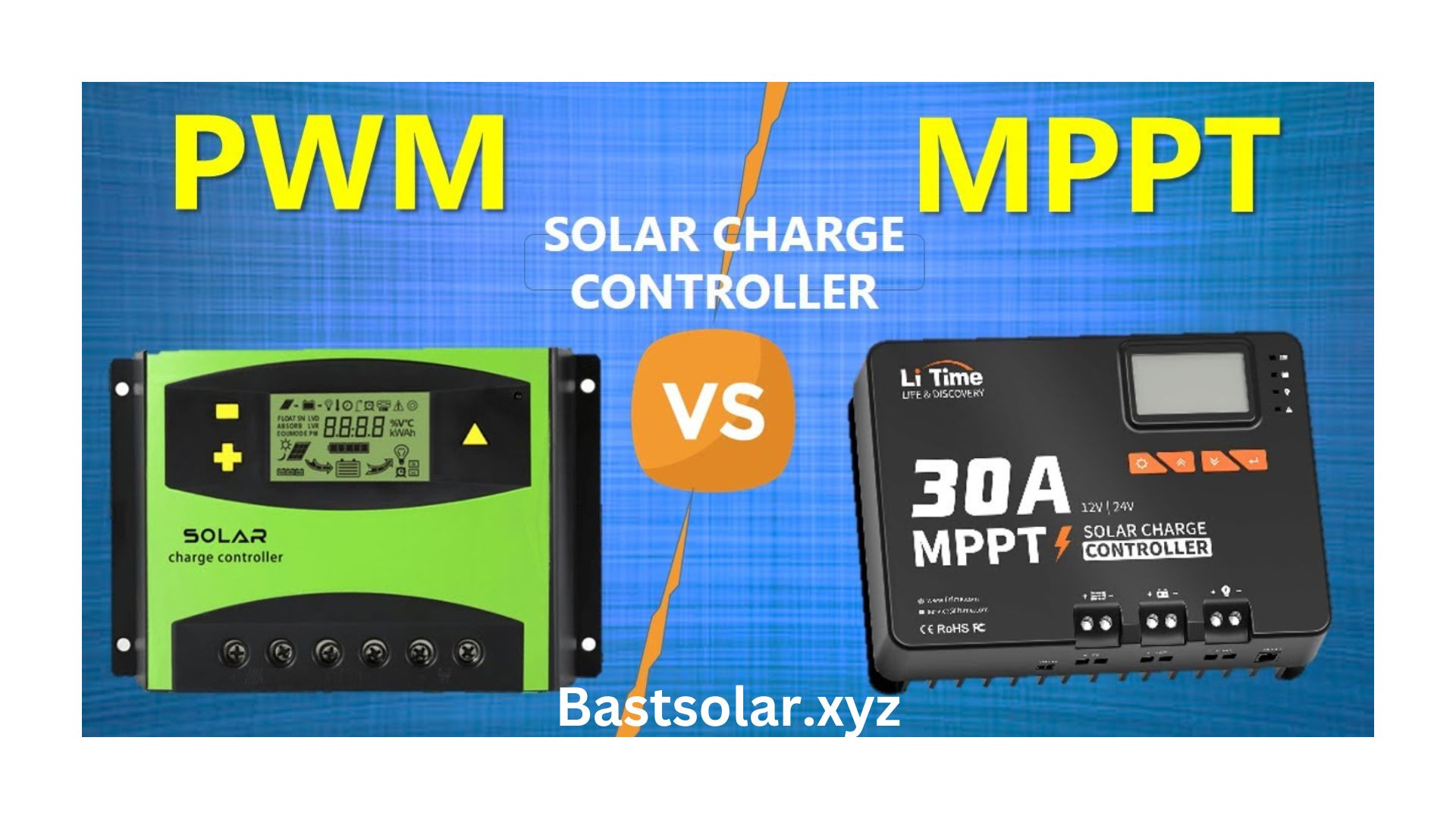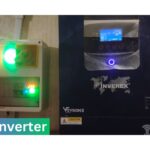When it comes to solar power systems, choosing the right charge controller is crucial. MPPT vs PWM: Which Solar Charge Controller is Right for You? Charge controllers regulate energy flow from solar panels to batteries, ensuring efficient energy conversion and long-term reliability. Two types of charge controllers dominate the market: MPPT (Maximum Power Point Tracking) and PWM (Pulse Width Modulation).
While both serve the same essential purpose, their operational principles, efficiency, and suitability for different setups differ significantly. Understanding the differences between MPPT and PWM controllers can help you decide which one is the best fit for your solar power needs.
What is a PWM Charge Controller?
A PWM (Pulse Width Modulation) charge controller is a simpler and more affordable. It works by connecting the solar panel directly to the battery bank and controlling the voltage at the panel. When the battery charges, the controller gradually reduces the power delivered by the solar panels to avoid overcharging.
The PWM controller operates at the same voltage as the battery, making it less efficient in certain conditions. If you have a 12V battery, the PWM controller will make the solar panel operate at or near 12V, even if the panel can produce higher voltage (like 18V or more). This means energy is essentially “left on the table” because the controller can’t optimize the power output. MPPT vs PWM: Which Solar Charge Controller is Right for You?
Pros of PWM Charge Controllers:
Affordability: PWM controllers are cheaper and accessible for small to medium solar setups.
Simplicity: Their straightforward design makes them easy to install and maintain.
Reliable in low-power systems: Best for solar systems with low power requirements, such as in RVs, boats, and small homes.
Cons of PWM Charge Controllers:
Less efficient: Particularly in scenarios where higher voltage panels are used with lower voltage batteries. MPPT vs PWM: Which Solar Charge Controller is Right for You?
Limited flexibility: They are less suited for larger, high-voltage solar setups.
What is an MPPT Charge Controller?
On the other hand, MPPT (Maximum Power Point Tracking) controllers are more advanced and efficient. They continuously track the solar panel’s optimal power point and adjust the energy flow to maximize efficiency. This means an MPPT controller can take high-voltage input from solar panels and convert it down to match the battery’s voltage without losing too much power.
In simpler terms, MPPT controllers can squeeze more usable energy out of your solar panels compared to PWM controllers. They are ideal for larger systems or setups where solar panels operate at a higher voltage than the battery system. MPPT vs PWM: Which Solar Charge Controller is Right for You?

Pros of MPPT Charge Controllers:
Higher efficiency: MPPT controllers can increase energy harvest by 20-30%, especially in cold or cloudy conditions where solar panels produce more voltage.
Better performance with high-voltage panels: These controllers can take advantage of high-voltage solar arrays, converting excess voltage into usable current.
Flexibility in different environments: They work more efficiently in varying weather conditions, such as low-light or colder climates.
Cons of MPPT Charge Controllers:
Higher cost: Due to their complexity and higher efficiency, MPPT controllers are more expensive.
More complex installation: These require more knowledge and experience to set up properly.
Key Differences Between MPPT and PWM Controllers
Now that you understand the basic principles of both MPPT and PWM controllers, let’s break down the key differences between the two:
| Feature | MPPT Controller | PWM Controller |
|---|---|---|
| Efficiency | 20-30% more efficient, especially in cold weather | Less efficient in high-voltage scenarios |
| Cost | Higher initial cost | More affordable |
| Ideal Use Cases | Large systems with high-voltage panels | Small to medium solar setups |
| Environmental Flexibility | Performs better in varied weather | Performs best in stable conditions |
| Complexity | More complex to install | Simple and easy to set up |
| System Size | Suitable for larger installations | Ideal for small-scale systems |
When deciding between MPPT and PWM charge controllers, consider the size of your solar system and your energy requirements. If you have a small solar setup and are working within a tight budget, a PWM controller might be enough to meet your needs. It’s a cost-effective option for smaller systems with low-voltage panels or where maximum efficiency isn’t critical.
However, for larger installations where you need every bit of energy harvested from your solar panels, an MPPT controller is the superior choice. If you’re using high-voltage solar arrays or operating in regions with frequent weather changes, the extra efficiency will quickly justify the higher upfront cost. MPPT vs PWM: Which Solar Charge Controller is Right for You?
In essence:
For small setups with budget constraints: Choose PWM.
For larger, high-efficiency systems: Choose MPPT.
FAQs About MPPT vs PWM
- Can I use an MPPT controller with any type of solar panel?
Yes, MPPT controllers are highly versatile and can work with various types of solar panels, especially those with higher voltage outputs. They are especially useful when the panel voltage is significantly higher than the battery voltage. - Is an MPPT controller worth the extra cost?
For larger systems or in environments where efficiency is crucial, the MPPT controller’s ability to maximize energy conversion can save money in the long term. It’s particularly beneficial in off-grid systems, cold climates, or installations with high-voltage solar panels. - Can I upgrade from a PWM to an MPPT controller later?
Yes, upgrading from a PWM to an MPPT controller is possible. However, it’s essential to ensure your current solar panel array and battery bank are compatible with the new controller. An MPPT controller will provide better efficiency, but you may also need to evaluate your wiring and setup. - Do MPPT controllers work better in cold climates?
Absolutely! MPPT controllers excel in colder climates because solar panels tend to produce more voltage in low temperatures. The MPPT controller can convert that extra voltage into usable current, increasing overall system efficiency. - How do I choose the right size of MPPT or PWM controller?
When selecting a charge controller, you should consider the system’s voltage and amperage ratings. It’s important to choose a controller that can handle the maximum output of your solar panel array while being compatible with your battery system. - What happens if I use the wrong charge controller for my system?Using an underpowered or mismatched charge controller can lead to inefficiencies, potential damage to your solar panels or batteries, and reduced lifespan of your system. Always choose a controller that matches your system’s voltage and power requirements.
Final Thoughts
Both MPPT and PWM controllers have their place in the solar energy ecosystem. For small, cost-conscious setups, PWM controllers can be a practical and effective choice. However, if you’re looking to maximize your energy harvest and have a larger solar array, MPPT is the clear winner.
By considering your system’s scale, location, and power needs, you can confidently choose the right charge controller to optimize your solar investment. Whether you’re powering a small RV or an off-grid cabin, the right charge controller will ensure your solar power system runs efficiently for years to come.




















